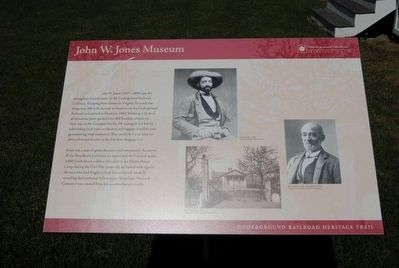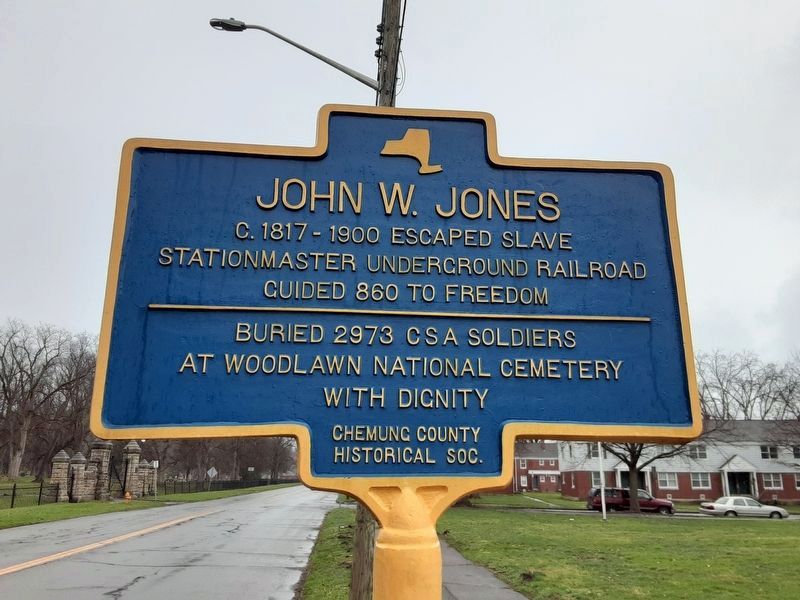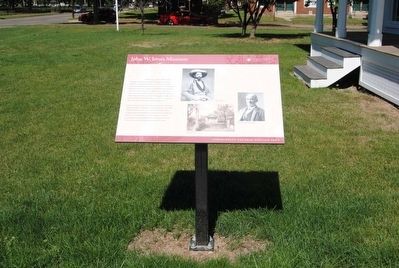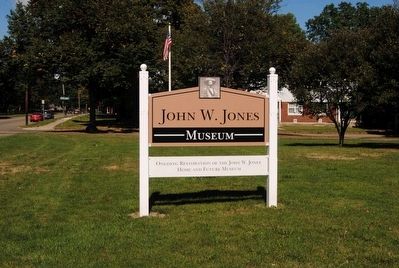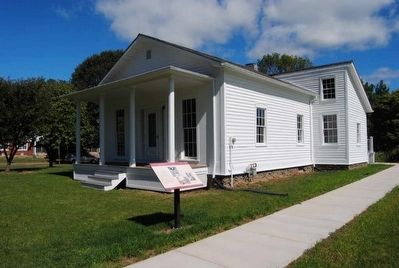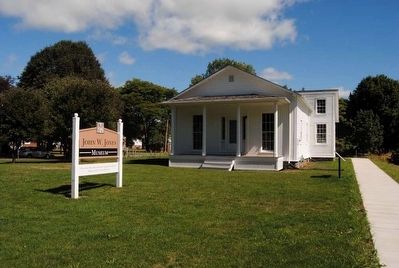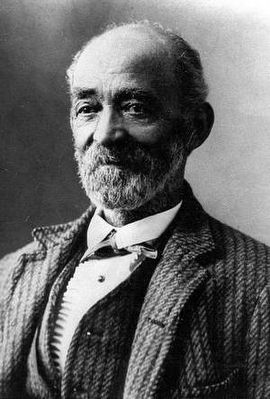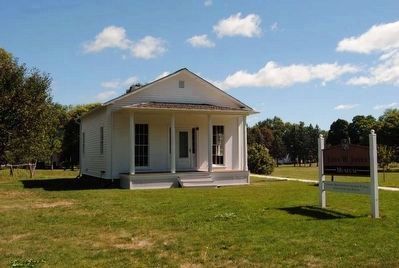Elmira in Chemung County, New York — The American Northeast (Mid-Atlantic)
John W. Jones Museum
Jones was a man of great character and compassion. As sexton of the Woodlawn Cemetery, he supervised the burial of nearly 3,000 Confederate soldiers who died in the Elmira Prison Camp during the Civil War. Ironically, he buried with dignity the men who had fought to keep him enslaved, carefully recording their personal information. Woodlawn National Cemetery was created from his accurate burial records.
Erected by Underground Railroad Heritage Trail.
Topics. This historical marker is listed in these topic lists: Abolition & Underground RR • African Americans • Cemeteries & Burial Sites. A significant historical year for this entry is 1844.
Location. 42° 6.465′ N, 76° 49.467′ W. Marker is in Elmira , New York, in Chemung County. Marker is at the intersection of Davis Street and Woodlawn Avenue, on the right on Davis Street. Touch for map. Marker is at or near this postal address: 1250 David Street, Elmira NY 14901, United States of America. Touch for directions.
Other nearby markers. At least 10 other markers are within walking distance of this marker. John W. Jones (a few steps from this marker); Augustus W. Cowles (about 600 feet away, measured in a direct line); Mark Twain (about 600 feet away); Colonel John Hendy (about 800 feet away); Confederate Burials in the National Cemetery (approx. 0.2 miles away); Confederate Burials (approx. 0.2 miles away); Shohola Railroad Accident Memorial (approx. ¼ mile away); Confederate Soldiers Memorial (approx. ¼ mile away); Underground Railroad Participants (approx. ¼ mile away); Woodlawn National Cemetery (approx. ¼ mile away). Touch for a list and map of all markers in Elmira.
Also see . . .
1. John W. Jones Museum. (Submitted on November 2, 2015, by Brian Scott of Anderson, South Carolina.)
2. John W. Jones House. The John W. Jones House currently stands at 1250 Davis Street, Elmira, New York, across from a historic entrance to Woodlawn Cemetery. It is the former home of John W. Jones and current home of the John W. Jones Museum. (Submitted on November 2, 2015, by Brian Scott of Anderson, South Carolina.)
3. John W. Jones. John W. Jones was born on June 21, 1817, on a plantation in Leesburg, Virginia, as a slave to the Ellzey family. Jones died on December 26, 1900 and is buried in Woodlawn National Cemetery, not far from Mark Twain. He was married to Rachel Jones (née Swails) in 1856, with whom he had three sons and one daughter. On June 3, 1844, fearing he would be sold to another plantation, as his owner grew old and near death, Jones and four others fled north. They survived a 300-mile trip and arrived in Elmira, New York in July 1844. (Submitted on November 2, 2015, by Brian Scott of Anderson, South Carolina.)
4. Underground Railroad. The Underground Railroad was a network of secret routes and safe houses used by 19th-century enslaved people of African descent in the United States in efforts to escape to free states and Canada with the aid of abolitionists and allies who were sympathetic to their cause. (Submitted on November 2, 2015, by Brian Scott of Anderson, South Carolina.)
5. Jones, John, House - National Archives. National Register of Historic Places documentation (Submitted on December 19, 2023, by Anton Schwarzmueller of Wilson, New York.)
Credits. This page was last revised on December 19, 2023. It was originally submitted on November 2, 2015, by Brian Scott of Anderson, South Carolina. This page has been viewed 485 times since then and 34 times this year. Photos: 1. submitted on November 2, 2015, by Brian Scott of Anderson, South Carolina. 2. submitted on April 9, 2022, by Scott J. Payne of Deposit, New York. 3, 4, 5, 6, 7, 8. submitted on November 2, 2015, by Brian Scott of Anderson, South Carolina.
